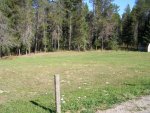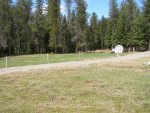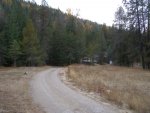Gene Blister
Member
Equipment
2019 Kubota B2601, FAL LA435, Snow Blower BX2822A, Land Pride rear blade RB1572
Hi all!
This will be Bessy II’s first spring and I want to finally get to work establishing a pasture-ish area on my homestead. It won’t be to support grazing animals right away, just look better, more controlled and groomed, than a weedy fire danger “vacant lot.” I’m hoping your experiences can help.
The ¾ acre site is south-facing in full sun, gently sloped down to the west and south. There’s no irrigation but I can get a hose and reciprocating sprinkler to it.
I’ve been hitting the indigenous weeds with glyphosate for the last 3 years and have managed to eliminate the oxeye daisy and most of the mullen. I gave the remaining grasses a good chop at 3 inches with the RCR1248LP brush hog last fall.
After the ground dries enough to work, the plan is to test the soil, mostly for pH, amend properly with lime if necessary, then work the soil with the landscape rake to clear the dead grasses and bust up the soil surface (I don’t have a disc harrow.)
I’ll then broadcast a “pasture mix” with a little added white clover, using the LandPride 500 broadcast hopper.
I don’t have a cultipacker, so I’ll used a chain harrow oriented with the tines up as a drag mat to get the seeds into the soil a bit, then keep the area irrigated.
My hope is that as this pasture mix gets established I’ll use the bush hog, set at about 3 inches, to hack off the weeds and let the grasses choke out the roots.
Sound like a viable plan? Thanks for your insight and experience!
This will be Bessy II’s first spring and I want to finally get to work establishing a pasture-ish area on my homestead. It won’t be to support grazing animals right away, just look better, more controlled and groomed, than a weedy fire danger “vacant lot.” I’m hoping your experiences can help.
The ¾ acre site is south-facing in full sun, gently sloped down to the west and south. There’s no irrigation but I can get a hose and reciprocating sprinkler to it.
I’ve been hitting the indigenous weeds with glyphosate for the last 3 years and have managed to eliminate the oxeye daisy and most of the mullen. I gave the remaining grasses a good chop at 3 inches with the RCR1248LP brush hog last fall.
After the ground dries enough to work, the plan is to test the soil, mostly for pH, amend properly with lime if necessary, then work the soil with the landscape rake to clear the dead grasses and bust up the soil surface (I don’t have a disc harrow.)
I’ll then broadcast a “pasture mix” with a little added white clover, using the LandPride 500 broadcast hopper.
I don’t have a cultipacker, so I’ll used a chain harrow oriented with the tines up as a drag mat to get the seeds into the soil a bit, then keep the area irrigated.
My hope is that as this pasture mix gets established I’ll use the bush hog, set at about 3 inches, to hack off the weeds and let the grasses choke out the roots.
Sound like a viable plan? Thanks for your insight and experience!
Attachments
-
196.2 KB Views: 359
-
195.8 KB Views: 337
-
125.2 KB Views: 380





